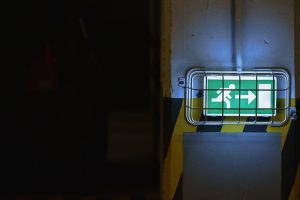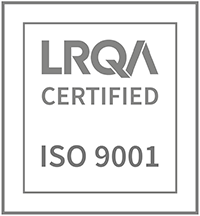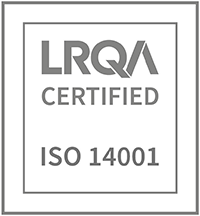The Reid Brewin Architects team kicked off our 2021 development sessions by looking at wayfinding and signage best practice, in a seminar hosted by UK headquartered sign company, Rivermeade.
Formed in 1974, the company has offices in London and Gateshead (UK) and designs, manufactures, and installs signs in the UK and hotels across the globe – and we were keen to see how such solutions contribute to a building’s user experience.
The one-hour session explained how planning a wayfinding scheme involves taking a fully integrated approach and looking at a variety of factors – from the location of the building and transport, to the design of maps and directional signs.
While wayfinding signage should – by its very nature – be simple and easy to follow, the Equality Act 2010 states that consideration should be given to those who may struggle to decipher the content.
Here are some of our key takeaway points.
How do I choose the right typeface or font?
While it can be tempting to employ an elaborate typeface or never-seen-before font style in a building, directional signage should always ‘play it safe’.
People who don’t see or read well may find it difficult to extract meaning from decorative or unusual styles, so stick to a safe serif or sans serif where possible – and save the cursive corporate fonts for a special occasion.
What are the best colour contrasts for signs?

The pairing of words and pictures and their respective backgrounds has long-since been debated, but it often comes down to common sense.
Light text on light backgrounds does not make for the easiest of reads – with the same sentiment applying to a dark palette. When thinking about your own signage, it’s important to understand your own brand colours, and how they might work if placed side-by-side.
Whatever you decide to employ in the end, be sure to keep the colour codes somewhere safe. That way, when it comes to upgrading single elements of a larger scheme, you’re not faced with multiple shades of grey.
Consider combinations in other contexts
The three most easy-to-read colour combinations are black and white, black and yellow, and red and white, but attention should be given to some of the popular settings for such pairings too.
Typically, white text on a red background symbolises an accident or danger ahead – and is often used in hospitals to highlight the route to A&E – while black text on a yellow background carries connotations of ‘danger’.
While this will always work in a medical setting, it may feel a little out of place in a shopping centre or university, for example.
Should I use symbols in signage?

Directional signage shouldn’t be limited to words and arrows – often the simplest solution can be the best. If we think once again about a hospital setting, there is often enough nervousness from people visiting such places, that struggling to find out where they need to go can often be overwhelming.
With most of those working in the building knowing the semantics of each department, consider what might work best for patients trying to locate each clinic. While the official team may be ‘Ophthalmology’ it might make a trip to hospital a lot less stressful if displayed as ‘Eye Department’ – perhaps with a symbol of an eye too.
Divide big buildings into ‘zones’

A huge construction or expanse of space can present a real challenge for those working in wayfinding. But it needn’t be as hard as it may seem. Dividing a site into zones is a great starting point, but to make it even more accessible, consider associating each zone with a colour and a shape.
For those who struggle with colour blindness, red, yellow, blue, pink, purple, green, orange, and brown are cited as the most easily distinguishable colours. But, when accompanied by an easy-to-recognise shape – such as a triangle, circle or square – it can make even the most challenging maze of corridors feel a little bit easier.
To find out more about Rivermeade, and to see some of their directional signage in action, visit: https://www.rivermeade.com/.








